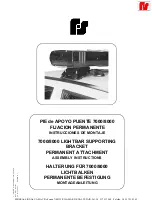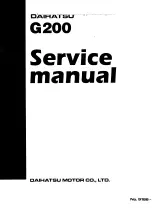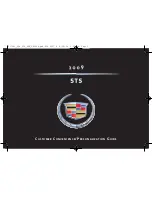
Tread: The portion of a tire that comes into contact
with the road.
Treadwear Indicators: Narrow bands, sometimes
called wear bars, that show across the tread of a tire
when only 1/16 inch (1.6 mm) of tread remains.
See When It Is Time for New Tires on page 5-69.
UTQGS (Uniform Tire Quality Grading Standards):
A tire information system that provides consumers
with ratings for a tire’s traction, temperature, and
treadwear. Ratings are determined by tire manufacturers
using government testing procedures. The ratings are
molded into the sidewall of the tire. See Uniform
Tire Quality Grading on page 5-72.
Vehicle Capacity Weight: The number of designated
seating positions multiplied by 150 lbs (68 kg) plus
the rated cargo load. See Loading Your Vehicle
on page 4-33.
Vehicle Maximum Load on the Tire: Load on an
individual tire due to curb weight, accessory weight,
occupant weight, and cargo weight.
Vehicle Placard: A label permanently attached to a
vehicle showing the vehicle’s capacity weight and
the original equipment tire size and recommended
inflation pressure. See “Tire and Loading Information
Label” under Loading Your Vehicle on page 4-33.
Extended Mobility Tires
Your vehicle, when new, had Goodyear Extended
Mobility Tires (EMT). There’s no spare tire, no tire
changing equipment and no place to store a tire in the
vehicle. Extended Mobility Tires perform so well
without any air that a Tire Pressure Monitor (TPM) is
used to alert you if a tire has lost pressure.
If a tire goes flat, you won’t need to stop on the side of
the road to change the tire. You can just keep on
driving. The shorter the distance you drive and the
slower the speed, the greater the chance that the tire will
not have to be replaced. If you drive on a deflated
EMT for 25 miles (80 km) or less and at speeds
of 55 mph (90 km/h) or less, there is a good chance that
the tire can be repaired. The tire can operate effectively
with no air pressure for up to 100 miles (320 km) at
speeds up to 55 mph (90 km/h), but the tire would then
have to be replaced. When a tire is filled with air, it
provides a cushion between the road and the wheel.
Because you won’t have this cushion when driving on a
deflated tire, try to avoid potholes that could damage
your wheel and require replacement of it.
Some road hazards can damage a tire beyond repair.
This damage could occur even before you’ve driven on
the tire in a deflated condition. When a tire has been
damaged, or if you’ve driven any distance on a deflated
5-62
Содержание 2006 Corvette
Страница 5: ...These are some examples of symbols that may be found on the vehicle v ...
Страница 6: ... NOTES vi ...
Страница 15: ...Put someone on it Get it up to speed Then stop the vehicle The rider doesn t stop 1 9 ...
Страница 62: ... NOTES 1 56 ...
Страница 139: ... NOTES 3 3 ...
Страница 140: ...Instrument Panel Overview 3 4 ...
Страница 238: ... NOTES 3 102 ...
Страница 393: ...Engine Drive Belt Routing Engine Drive Belt Routing for 6 0L and 7 0L Engines 6 15 ...
Страница 395: ...Maintenance Record cont d Date Odometer Reading Serviced By Maintenance I or Maintenance II Services Performed 6 17 ...
Страница 396: ...Maintenance Record cont d Date Odometer Reading Serviced By Maintenance I or Maintenance II Services Performed 6 18 ...
Страница 412: ... NOTES 7 16 ...
















































